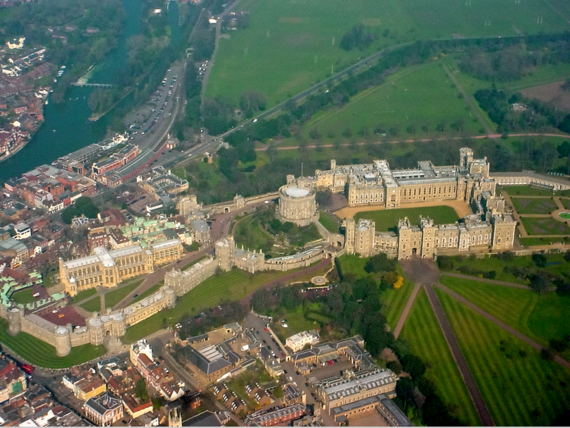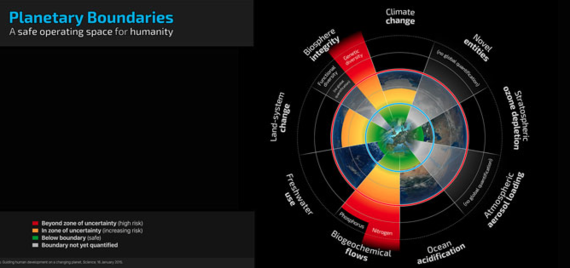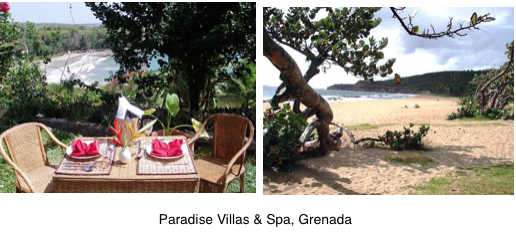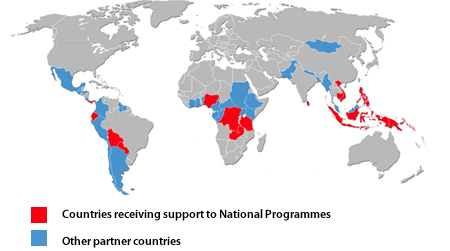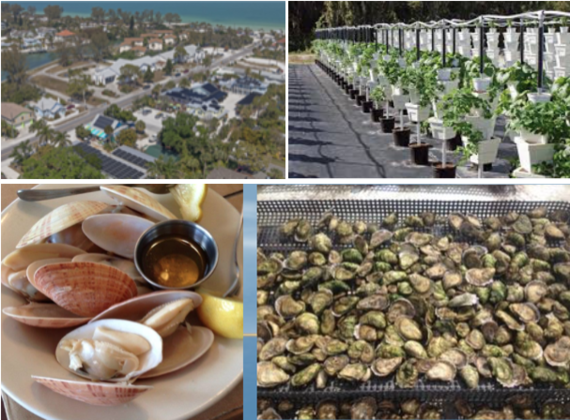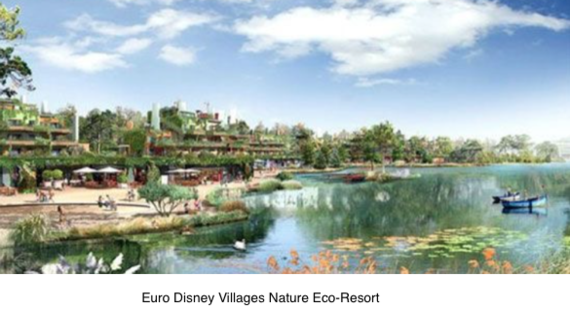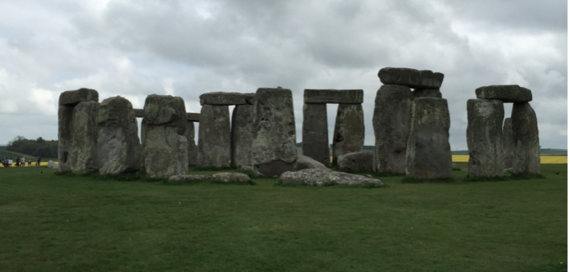This month I had the privilege of serving as one of the co-chairs for the Windsor Castle Consultation "Imagine the Possible: Innovation for Urban Development, Sustainable Tourism and Culture.
The Consultation was coordinated by Dr. Diane Davis of the International Council for Caring Communities (ICCC). The Consultation was attended by representatives from three different U.N. agencies and global leaders from such diverse places as Europe, the UAE, U.S. and China.
The sustainable tourism portion included concepts of the anthropocene, planetary boundaries, social-ecological systems approaches, resilience thinking and cultural preservation, particularly for indigenous cultures and the cultures found in geotourism destinations.
A summary of some of the key ideas presented are as follows:
As many scientists have observed we have entered a new geological era called the Antropocene, where human impacts are the most powerful force for changes on planet Earth.
Key evidence that we are now in this new era where humans are the dominating force include:
- Population is currently 7.2 billion and projected to grow to 8.3 to 10.9 billion by 2050
- 75 percent of Earth's land surface outside of ice sheets is managed by humans
- 40 percent of Earth's land area is used for agriculture and demand for food is increasing as population grows
- 50 percent of the world's forests are lost
- Extinction rates for plant and animal species is 100 to 1000 times above normal
- Only about 10 percent of the world's land area is protected and much of it does not have the ability to enforce that protection. For the oceans the percentage is much less.
The Stockholm Resilience Centre scientists have begun to quantify what are called planetary boundaries to define the limits in which humans can operate safely. These planetary boundaries include:
- Climate Change
- Ocean Acidification
- Novel entities
- Ozone Depletion
- Atmospheric Aerosol Loading
- Biochemical Flows (Phosphorus and Nitrogen)
- Freshwater Use
- Land System Changes (Loss of forests are the Key issue)
- Biosphere Integrity (loss of biodiversity)
A new model for tourism was shared to address the planetary boundaries along with some examples of best practices in tourism. Some of the best practices already in place include but are not limited to:
Climate Change & Ocean Acidification - Both of these boundaries are focused on the same issue, the need to reduce carbon emissions.
The Walt Disney Company has set the benchmark for tourism by setting a goal in 2008 to reduce their net carbon emissions by 50 percent by the year 2012 and then become net carbon zero thereafter. They achieved the interim goal and now working to be net carbon zero.
They have also made a decision to tax carbon emissions on every business unit of the Company. The money collected from the self-imposed tax is used to either reduce their carbon further through different conservation and efficiency strategies, and/or to purchase carbon offsets which are mostly used to purchase forest preservation.
Another best practice example is The Paradise Bay Villas in Grenada. They offer carbon offsets for all flights from its guests along with carbon offsets for their local transport while at the resort. The factoring in of the travel helps to make them truly net carbon neutral.
Land System Changes - This boundary is focused primarily on the need to preserve our forests, particularly tropical forests.
The Walt Disney Company is a leader in this area preserving forests and other critical habitat through their Disney Worldwide Conservation Fund, a donation of $17 million to Conservation International for the UN-REDD programs, purchase of 7 million acres of forest land through carbon offsets in Peru, Congo and the U.S., and contributions of a portion of the movie tickets for their Disney Nature films for conservation purposes including forest preservation.
The UN-REDD Programme is the United Nations collaborative initiative on Reducing Emissions from Deforestation and forest Degradation (REDD) in developing countries.
Novel Entities - This boundary includes chemical pollution and other unforeseen consequences of various human activities and interventions. Some best practices for this boundary include:
- Shearaton Hotel, San Diego California has developed a zero waste to landfill program to eliminate harmful chemical pollution.
- Marriott Hotels are diverting over a million pounds of E-waste
- The Disney Animal Kingdom is using all non toxic chemicals for cleaning and maintenance.
- The Disney Cruise Line has developed a new chemical free toxic hull coating for its cruise ships which has the added benefit of making them ore energy efficient.
Biochemical Flows - This boundary is focused on the need to reduce the phosphorus and nitrogen overload, which is a primary cause of the over 400 Ocean Dead Zones around the world, the largest the size of the state of New Jersey.
The primary issue is the need to reduce harmful fertilizers.
The Chiles Restaurant Group in Anna Maria, Island, FL is a global leader in utilizing organic and locally sourced food that greatly reduces the need for harmful fertilizers.
Some of their best practice initiatives include:
- Growing edible gardens on Pine Avenue
- Purchase of a farm for both organic fruits and vegetables and hydroponic farming to supply the restaurants
- Using the invasive species of the Wild Pig as a new menu item
- Developing a new model for sustainable seafood in collaboration with the local Cortez Historic Fishing Village and many other partners. This new model is now being considered for the Gulf Coast Innovation Challenge
In addition to these best practices already in existence, the collaboration between Pierre & Vacances Center Parcs and Euro Disney on the Village Nature promises to raise the bar even higher for best practices in sustainable tourism to live safely within the planetary boundaries.
The commitment of this project includes:
- Target 1 - Zero Carbon using geothermal, photovoltaics, wind and biomass
- Target 2 - Zero Waste using preventative initiatives to reduce initial waste, sort 90 percent of recyclable waste, visitor education and composting
- Target 3 - Sustainable Transport prohibiting cars inside the site during the stay, achieve 28 percent of visitors arriving by train, ensure that 100 percent of visitors use public transport during their stay, giving priority to pedestrian, bike and horse trails, and improving transportation infrastructure for buses and railways.
- Target 4 - Sustainable and local materials using lifecycle analysis, and eco-labelled products when choosing building procedures, building materials and furnishings.
- Target 5 - Sustainable and local food that will contain 25 percent of food produced within 100 KM, 20 percent of goods from organic farming, minimum of 50 percent of products coming from fair trade, no GMO's, partnerships with local farmers, producing some food onsite and offering sustainable organic menus in onsite restaurants.
- Target 6 - Sustainable Water using water conservation devices, efficient water treatment, supplying pools through rainwater, water storage systems and ecological designing of pools (by planting reed beds) to improve water quality and preserve biodiversity
- Target 7 - Fauna, Flora and habitat by keeping development to less than 10 percent of the land, preserving the water ways and ecological zones, creating themed gardens and an organic farm and implementing flora and fauna observatories.
- Target 8 - Culture and heritage, through setting up hiking or excursion programs focused on the discovery of the local culture and heritage, promoting local products and setting up a program for visitor information and involvement about sustainable development and the "One Planet Living" approach.
- Target 9 - Local Partnerships through creating direct and indirect jobs in partnership with employment agencies, maximizing spending within a 100 KM radius, open partnerships with local players and fostering job opportunities as well as economic, social and fiscal benefits for the inhabitants in neighboring areas. All facilities will be accessible to the mobility impaired.
- Target 10 - Quality of Life & Well Being through organizing events focused on learning about sustainable lifestyles, and actives focused on interactions with nature, sports and health, use of healthy materials, access to a healthy diet, promoting a responsible human resource and ensuring comprehensive synergies with Village Nature's social and economic development.
The challenges of humanity living within the planetary boundaries can at times seem overwhelming. One sign of hope that I found on a side trip I took before the consultation was found at Stonehenge.
To this day no one is really sure how or why this temple was built some 5000 years ago.
Some of the stones are estimated to weigh as much as 45 tons and some of them are thought to come from as far away as Wales.
The temple was built with no trucks for transporting the stones, no improved roads, no sophisticated communication systems or other technologies that might be thought today as a necessary must for accomplishing such a task.
In an article in Live Science I read "One new theory about Stonehenge, released in 2012 by members of the Stonehenge Riverside Project, is that Stonehenge marks the "unification of Britain," a point when people across the island worked together and used a similar style of houses, pottery and other items.
In a news release, professor Mike Parker Pearson of the University of Sheffield said that "this was very different to the regionalism of previous centuries. Stonehenge itself was a massive undertaking, requiring the labour of thousands to move stones from as far away as west Wales, shaping them and erecting them. Just the work itself, requiring everyone literally to pull together, would have been an act of unification."
Perhaps this is what is most needed for the world to address the challenges of living safely within planetary boundaries, unification around common goals and people willing to cooperate and pull together, and to sacrifice if necessary to accomplish something for the greater good.
Results and recommendations from this Consultation are designed to stimulate implementation of result oriented solutions through presentations at United Nations Commissions and Forums as well as, other related venues.
Some key recommendations for you the reader to consider for implementation include but are not limited to.
- Increase awareness of the Global Sustainable Tourism Council (GSTC) criteria.
As the consultation members continue to share ideas and develop new models for best practices, I would be most interested in any thoughts that any of you may have to contribute to the process as well.
All of us can contribute something to make tourism more sustainable and in turn our world a better place for all.
Dr. David W. Randle is Director of the University of South Florida's Patel College of Global Sustainability Sustainable Tourism, Managing Director International Ocean Institute Waves of Change Blue Community Initiative, and President and CEO of the WHALE Center
